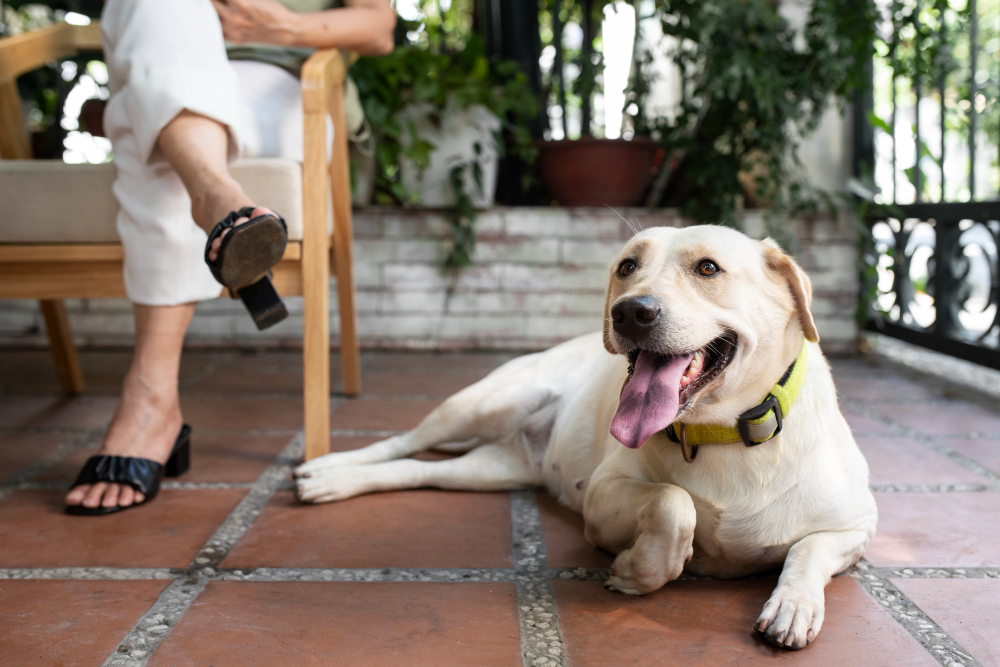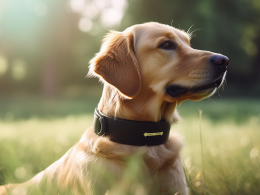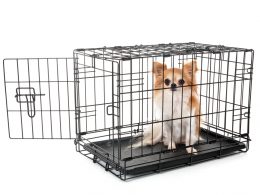During the registration procedure, the customers are queried about the availability of outdoor space in their homes. As a result, a significant number of dogs that we rehome are placed in properties without gardens, and this occurs regularly. It is possible to find a loving home for a dog even in the absence of a yard, as several canines have been successfully rehomed to owners without such outdoor space.
Individuals residing in cities or renting accommodations may find it difficult to justify the additional expenses associated with maintaining a yard. However, it is important to note that not having a yard does not necessarily make it challenging to care for a pet.
Prospective dog owners should consider various factors before making the decision to adopt a dog from a local rescue center. Owning a pet comes with significant responsibilities and requires careful thought and consideration.
Along with providing a loving home, it is vital to consider the time and attention that a dog needs to remain healthy and happy. Additionally, one should be aware that the cost of adopting a pet extends beyond veterinary bills and should factor in small-space-specific considerations when bringing a dog into an apartment or a smaller living space.
Adopting a Dog for Your Rental Home: Tips from Trainers and Rescues
When considering adopting a dog for your rental home, it’s important to keep in mind that the decision ultimately lies with your landlord. If your lease explicitly prohibits pets, there’s little room for negotiation. Additionally, city living can pose unique challenges for pet owners, as frequent walks and companionship are often necessary for many breeds. However, there are options available, such as hiring a dog walker or enlisting the help of a trusted neighbor to dog-sit. It’s worth noting that smaller dogs tend to require less living space, while larger breeds like Great Danes may require a larger home. Before making a final decision, be sure to do your research and consult with a dog adoption agency or rescue organization. While a dog’s breed can be a good starting point, it’s important to consider each dog’s unique personality and needs, and professional trainers can provide valuable insights to help you make the best choice for you and your potential furry friend.
No Yard, No Problem: Top Dog Picks for Tiny Homes and Apartments
When living in a tiny home or apartment without a yard, finding the right dog breed can be a challenging task. Here are some top dog picks that are perfect for small living spaces:
-
Affenpinschers – With their rustic features and curious personalities, Affenpinschers are ideal pets for those with a small garden area. However, being ratters, they are naturally curious and need plenty of exercises to stay healthy.
-
Bolognese – Part of the Bichon family, Bolognese dogs are perfect pets for small living spaces. They enjoy spending quality time with their owners and do not require a lot of physical activity.
-
Chihuahuas – If you’re looking for an adorable pet that can fit into a tiny house without a garden, Chihuahuas are an excellent choice. They do not require a yard to play outside, but they need approximately 30 minutes of physical activity each day.
-
Havanese – The Havanese breed is famous for pet owners due to its small size and unique personality. These dogs are part of the “toy dog” category, making them an ideal choice for houses without gardens.
-
Schipperke – Bred initially to labor on barges, Schipperkes are now immensely popular as pets in Belgium. Though petite, they are well-suited to compact living quarters without gardens. However, because of their love of exploring, they require up to an hour of daily activity.
Choosing the right dog breed for your living space is crucial to ensure both you and your pet are happy and healthy. Consider factors like the dog’s temperament, exercise needs, and size to find the perfect match for your lifestyle.
Why Having a Yard May Not Be Essential for Your Dog’s Happiness
Living in a small apartment or tiny home without a yard doesn’t have to mean giving up on the idea of adopting a dog. Many dog breeds can thrive in smaller spaces and don’t necessarily require a yard to be healthy and happy.
While a yard can be helpful, it’s not enough to ensure your dog stays active and healthy. Regular exercise and playtime outside are important for your dog’s well-being.
In a smaller living space, creativity is key when it comes to activities and training. Long-lasting chews and puzzle toys can keep your dog occupied, and training new tasks can be mentally stimulating.
Walking your dog may require a standard-length leash depending on where you live, but there are other options such as long lines, lunges lines, or multiple leads clipped together to give your pup more mobility while staying safe.
Consider breeds such as Affenpinschers, Bolognese dogs, Chihuahuas, Havanese, and Schipperkes, which are known to do well in small spaces. And remember, with love, patience, and attention, you can give your furry friend a happy and fulfilling life, no matter the size of your living space.
Garden Play vs. Walks: Finding the Right Balance for Your Dog’s Health
Gardens are essential for dogs for several reasons. Whether for the sake of their overall fitness or the stimulation of their minds, having that additional outdoor area for them to explore at their pleasure makes a world of difference in how happy and well-behaved they are.
Dogs should ideally be taken for walks regularly to keep them physically healthy and fit and to prevent them from becoming bored. However, having a large garden to play in is an excellent option for weeks when canine owners might have been a little too busy taking one dog for that minute walk of the day.
It is not fun for humans to stay indoors for an extended period with no positive social contact with other people or the outdoors. Nor is it fun for dogs. Therefore, to ensure that a dog continues to be well-trained and socialized with other dogs, one must always consider the dog’s emotional well-being.
A much more prudent choice for dogs and their owners is the installation of security gates and high walls within enclosed gardens. Then, depending on the garden’s safety, you can leave your dog outdoors for extended periods without worrying about getting into trouble. Your dog will be better off because of the trust and space it has been given.
Pets in Freehold and Leasehold Properties: Understanding Your Rights and Responsibilities
Owning a pet is possible in freehold properties, but leasehold properties are more common for flats. Just like when renting a property, you need to seek permission from the freeholder before bringing a pet into the house.
The welfare of your pet is of utmost importance. Larger animals and those that need an outdoor space for their health and psychological well-being may not do well in an apartment.
Pets living in apartments should be easy to care for in terms of feeding and exercise. They also thrive in households with other animals, so it’s important to consider this when choosing your living situation.
Including a “no pets” condition in a rental agreement is simple. Clauses prohibiting dogs from temporarily or permanently living in the apartment should be written in plain language, and consequences, including costs, should be clearly stated in case of a violation.
When selecting a dog to live in an apartment, size is not the only factor to consider. Breeds with high levels of excitability, such as little gun dogs, may require a larger living space to prevent bothering neighbors.
Disposition is also essential to consider when choosing a dog for apartment living.














